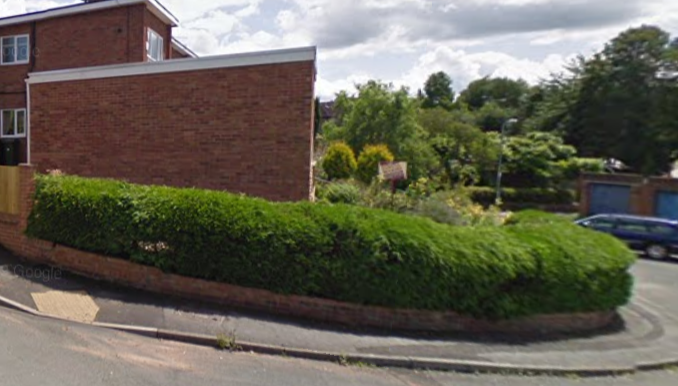We have seen it so many times around Ludlow. A pedestrian lying on the pavement. A worried group huddled around. A dash to charity shop to grab blankets and coats to keep the victim warm while they wait, often for a long time, for the ambulance.
Not all falls are a result of tripping on a faulty or uneven pavement but too many are.
It would help us tackle the menace of uneven and broken pavements if we could collect local data on falls. This can be submitted to me in confidence by Messenger, text, or email (andy@andybodders.co.uk).
The trigger for this article comes from a report published at beginning of this month by the charity Living Streets. One of the case studies is Quarry Gardens, Ludlow.
At the end of last year, I reported that at least 50 people had fallen in Ludlow in a single week after snow turned to ice and the pavements weren’t cleared. However this time, I am asking about falls on pavements during more normal weather due to the condition of the pavements due to leaves, cracks, raised slabs, uneven surfaces and lack of maintenance.
The Living Streets survey for “Pedestrian slips, trips and falls” received a response rate of around 14%. That is low for a local authority survey and perhaps reflect the low priority given to pavements and footpaths in many councils. A crude estimate based on the survey suggests there are around 2.5 million reports of pavement problems a year in England.
Ludlow’s Quarry Gardens had a significantly larger number of quantifiable faults due to lack of repair or maintenance than any other site examined for the study. It had significantly sized areas with small fissures and scuffed surfaces. The full case study is below.
Understandingly, many people wish to claim against their council after a fall. Of more than 30,000 claims made a year, fewer than 20% succeed, most of these after legal action. Councils, including Shropshire, employ a defence under Section 58 of the Highways Act 1980, that all reasonable measures were taken to ensure the highway was not dangerous to traffic or pedestrians. While highways budgets may not feel the financial impact of falls, the NHS and council adult social care budgets do. There are also personal costs.
Living Streets estimates that £1.69bn is needed to bring pavements to a good condition (excluding London). That’s a lot of money but to put it in perspective, it is only around five miles of HS2 construction. Falls can also be financially costly for people, as well as damaging to their health.
Many falls result in no more than bruising and muscle strains. Even these can be a significant problem for older and those with mobility issues. Cracked ribs can take as long as two months to heal for older people [1].
Quarry Gardens, Ludlow
The street is a quiet residential road with short cul-de-sac side roads (also named Quarry Gardens but not directly surveyed) but it provides a pedestrian route to the town centre and railway station. The street comprises post-war semi-detached houses with some short terraces and connects into Gravel Hill with its larger Victorian houses siding onto the entrance to the street. A significant number of issues were identified, mainly related to wear-and-tear with failing kerb edges potentially due to cars mounting the footway to park. There are many patch repairs which appear to be several years old and related to access to underground utilities. Surface-mounted tactile paving has been added to some sideroad junctions but are now largely failing and creating new hazards. Other obstructions on the street are related to private properties and parking, suggesting a need for enforcement. This includes overhanging vegetation and loose surface material spilling from a private parking area onto the footway; the loose material could be a particular hazard given the steep gradient of this section of street. There is also a reliance on the dropped kerbs of driveway crossovers to provide level crossing points across the main carriageway and on some side-street junctions.
Notes
[1] The recovery time for cracked or broken ribs can vary depending on several factors, including the age of the individual. However, in general, it takes about 4-6 weeks for cracked ribs to heal completely. Here’s a breakdown of the recovery time by age group:
- Children: Children’s bones are generally more flexible and less brittle than adults, so they may recover faster. It can take around 3-4 weeks for children’s cracked ribs to heal.
- Young adults: Young adults in their 20s and 30s usually have faster recovery times than older adults. It can take around 4-5 weeks for cracked ribs to heal in this age group.
- Middle-aged adults: Middle-aged adults in their 40s and 50s may have a slightly longer recovery time due to the natural aging process. It can take around 5-6 weeks for cracked ribs to heal in this age group.
- Older adults: Older adults over the age of 60 may have a longer recovery time due to a decrease in bone density and muscle mass. It can take around 6-8 weeks for cracked ribs to heal in this age group.
It’s important to note that these are general estimates, and recovery time can vary depending on the severity of the injury and the individual’s overall health. It’s always best to consult a doctor for a proper diagnosis and treatment plan.
Information supplied by ChatGPT.


Andy, when leaving the town, the pavement leading to Bistro Seven in Corve Street can be tricky. I always approach it with caution.
Sincerely
Rosemary
The pavements seem never to be swept. So frequently they are strewn with grit and other debris that seems not to be classed as litter.